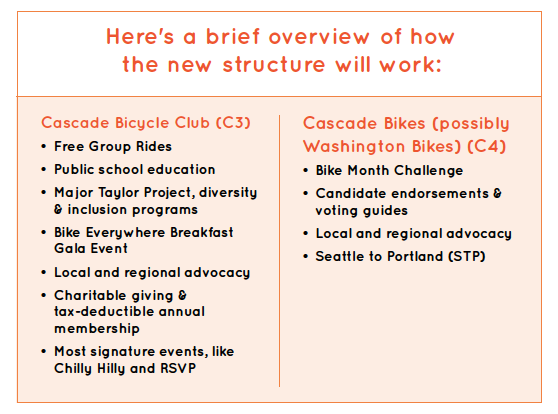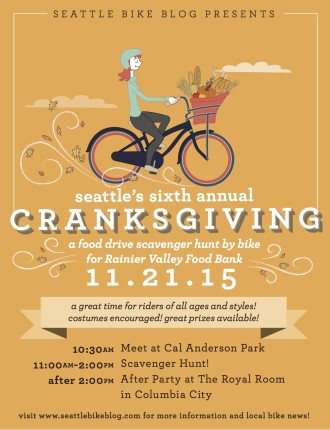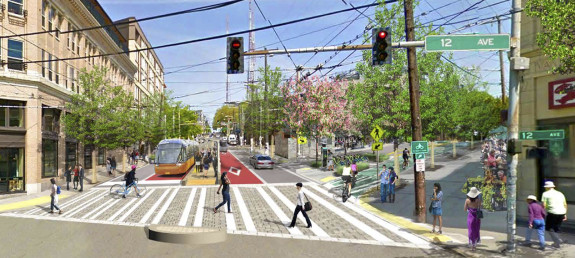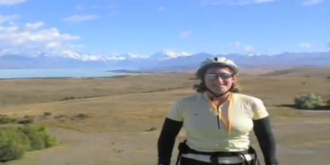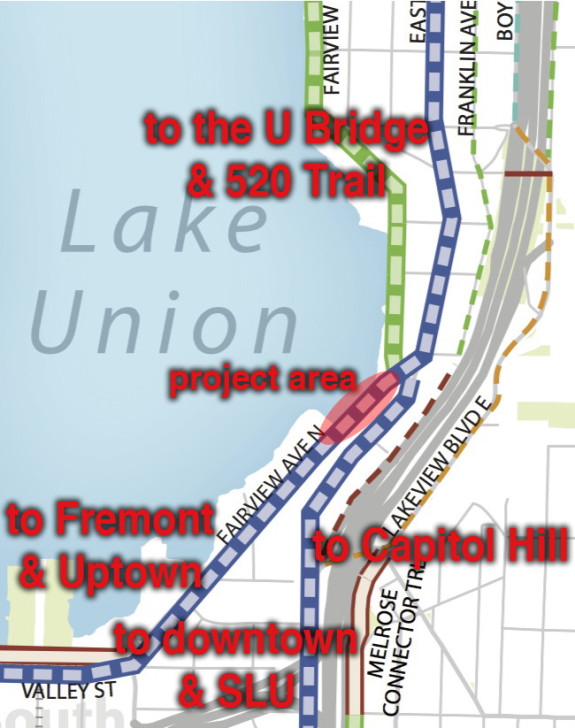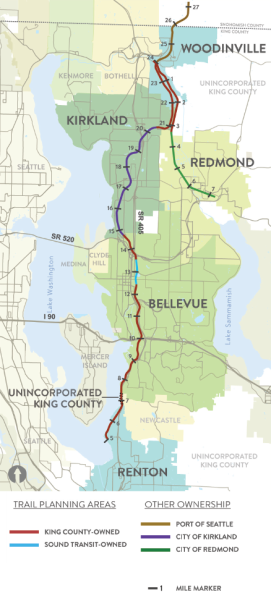 King County will remove the rails on the Eastside Trail, a vital step toward creating a walkable and bikeable trail from Woodinville to Renton.
King County will remove the rails on the Eastside Trail, a vital step toward creating a walkable and bikeable trail from Woodinville to Renton.
The work was proposed by King County Executive Dow Constantine and approved by the King County Council. The rails are defunct and abandoned, and the scrap value of the rails should fund the work.
Once the rails are out, the rough and rocky railbed will still not be easily bikeable. It will take more work to create a bikeable soft surface trail and intersection improvements like the section Kirkland opened earlier this year.
Constantine hopes the first sections of usable interim trail will open in two years.
Sound Transit will also remove the rails in the relatively short section that agency owns in Bellevue (blue on the map) as the agency has planned as part of the East Link light rail project. The corridor will support both the rail line and the trail.
There’s also a disagreement breaking out in Kirkland over city plans to work with Sound Transit on rebuilding their section of the corridor to include both a permanent trail and a rapid transit corridor in the Sound Transit 3 funding package. Seattle Transit Blog outlines the bus rapid transit (“BRT”) plans well. Transit alongside the trail could much better access neighborhood centers in Kirkland than relying only on I-405.
On the flip side, a neighborhood group has created a campaign to fight the BRT idea under the name Save Our Trail. They argue against the BRT because it would make the trail less serene, which is true. You can read a recent letter outlining their concerns in Kirkland Views.
Kirkland needs both better transit and better biking and walking access. A complete and safe trail is vital to any corridor development plans. But that doesn’t mean transit and a trail cannot exist side-by-side. In fact, a project done well could allow the two elements complement each other, especially when linked to planned bike share expansion in Kirkland.
We will follow this debate as it develops.
Here is the King County press release about removing the rails: (more…)


